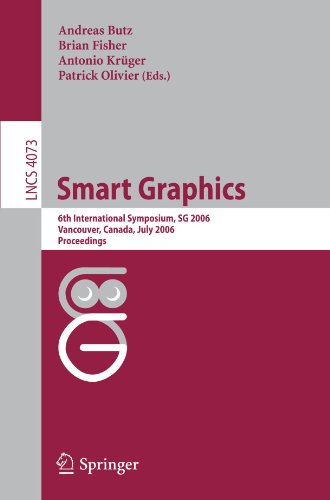

Most ebook files are in PDF format, so you can easily read them using various software such as Foxit Reader or directly on the Google Chrome browser.
Some ebook files are released by publishers in other formats such as .awz, .mobi, .epub, .fb2, etc. You may need to install specific software to read these formats on mobile/PC, such as Calibre.
Please read the tutorial at this link: https://ebookbell.com/faq
We offer FREE conversion to the popular formats you request; however, this may take some time. Therefore, right after payment, please email us, and we will try to provide the service as quickly as possible.
For some exceptional file formats or broken links (if any), please refrain from opening any disputes. Instead, email us first, and we will try to assist within a maximum of 6 hours.
EbookBell Team

0.0
0 reviewsThe International Symposium on Smart Graphics 2006 was held during July 23–25, 2006, at the University of British Columbia in Vancouver, Canada. It was the seventh event in a series which originally started in 2000 as an AAAI Spring Symposium. In response to the overwhelming success of the 2000 symposium, its or- nizers decided to turn it into a self-contained event. With the support of IBM, the ?rst two International Symposia on Smart Graphics were held at the T. J. Watson Research Center in Hawthorne, New York, in 2001 and 2002. The 2003 symposium moved to the European Media Lab in Heidelberg. Since then the conference has alternated between North America and Europe. It was held at Ban? Alberta Canada in 2004 and at the cloister Frauenw¨ orth on the island of Frauenchiemsee in Germany in 2005. The core idea behind these symposia is to bring together researchers and practitionersfrom the ?eld of computer graphics,arti?cialintelligence, cognitive science, graphic design and the ?ne arts. Each of these disciplines contributes to what we mean by the term “Smart Graphics”: the intelligent process of c- ating e?ective, expressive and esthetic graphical presentation. While artists and designers have been creating communicative graphics for centuries, arti?cial - telligence focuses on automating this process by means of the computer. While computer graphics provides the tools for creating graphical presentations in the ?rst place, the cognitive sciences contribute the rules and models of perception necessary for the design of e?ective graphics.